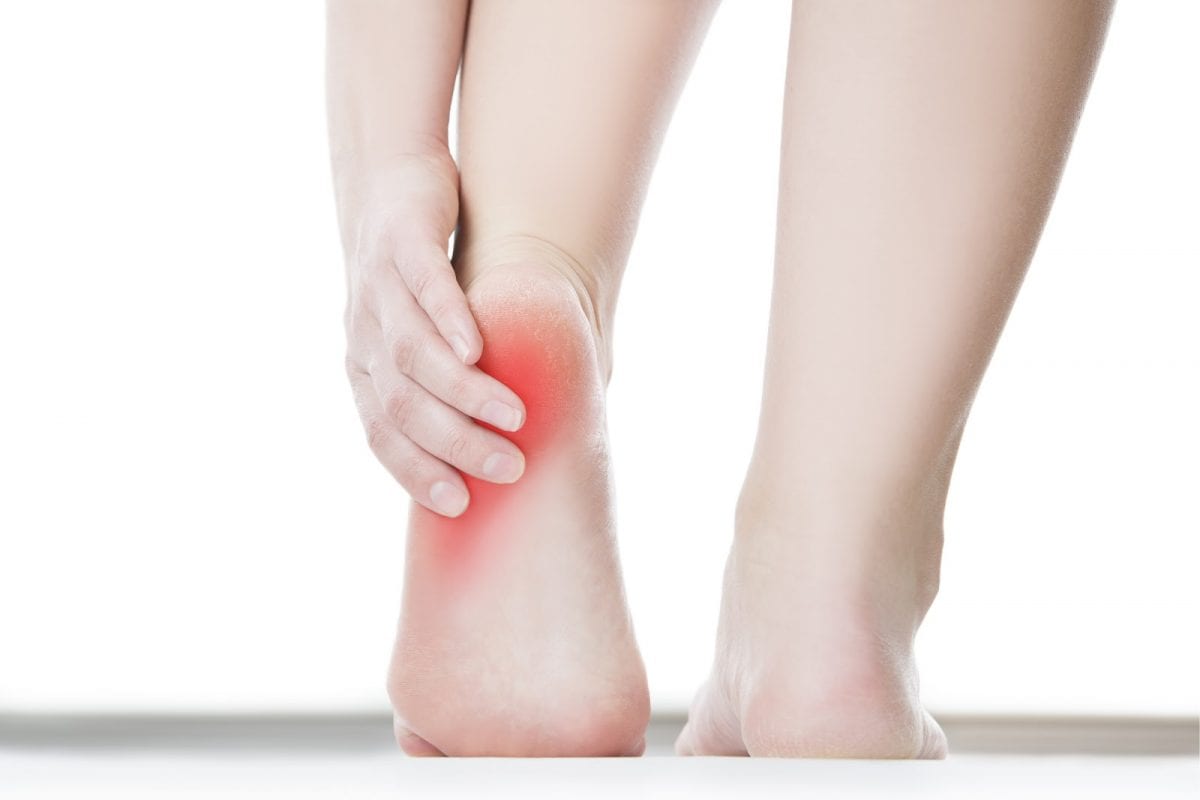Heel pain is something that people at least experience once in their lives. Heel pain can stem from many causes. The most common cause that comes to mind is plantar fasciitis. The common causes of heel pain are —–
- Plantar fascial tears/ rupture
- Baxter nerve compression/entrapment
- Stress fracture
- Achilles tendonitis, and
- Fat pad atrophy
Correct diagnosis of heel pain is key to obtaining the correct treatment to lead you a pain free lifestyle.
What is Plantar Fasciitis?
Plantar fasciitis is the inflammation and irritation of the plantar fascia, which is three bands of fascia/tissue that runs along the bottom of the foot. The most common location the insertion of the medial band –
- Pain with the first steps in the morning
- Pain after getting up after periods of rest, and
- Extended period of activity is a common sign of plantar fasciitis
Clinical diagnosis consists of a physical examination and sometimes a plain x-ray.
A diagnostic ultrasound can measure the thickness of the fascia, thickness beyond 4 mm (normal thickness is approximately 4 mm) is indicative of plantar fasciitis. Plantar fasciitis treatment consists of –
- Anti-inflammatory medication
- Stretching
- Icing
- Inserts
- Physical therapy
- Shoe evaluation, and
- Shockwave therapy
If pain continues at rest, there can be a possibility of plantar fascia tear and rupture. If a tear or rupture is suspected, an MRI should be ordered. Treatment for a tear/rupture consisted of partial non weight bearing in a boot for 4-6 weeks.
Baxter’s Nerve Compression
Baxter nerve compression is the compression/entrapment of the infra-calcaneal nerve, the first branch of the lateral plantar nerve. The nerve become compressed and entrapment between a muscle and plantar fascia on its way to the lateral (outside) of the foot to the muscle that makes the pinky toe twitch. This nerve entrapment can present itself like plantar fasciitis with numbness and abnormal sensation. Diagnosis is made with physical examination and a diagnostic injection under ultrasound guidance. An MRI is sometimes ordered. Treatment consists of –
- Stretching
- Physical therapy
- Inserts
- Shockwave therapy
- Anti-inflammatory medication, and
- Nerve ablation
Stress Fractures
Stress fractures of the heel bone (calcaneus) can present itself with the same symptoms as plantar fasciitis. Stress fractures occurs from repetitive motion and overuse. You experience pain with weight bearing and when your heel is squeezed. This condition is often diagnosed through physical examination. A stress fracture does not show up on x-ray. It takes 4-6 weeks to show bony healing on x-ray. Treatment should be immediate to prevent the stress fracture from becoming a fracture. An MRI can be performed to show stress reaction of the heel. Treatment includes –
- Rest and complete to partial non weight bearing in a boot.
Achilles Tendinitis
Achilles tendinitis is the inflammation of the Achilles tendon. The Achilles tendon is the tendon that connect the calf muscle to the heel. Pain is located at the back of the heel. Patient reports of stiffness and pain in the morning with difficulty walking and running. Diagnosis is based on physical examination and ultrasound examination. Treatment consists of –
- Stretching
- Heel lifts
- Physical therapy
- Anti-inflammatory medication, and
- Shockwave therapy
Fat Pad Atrophy
We are all born with a fat pad underneath our heel and ball of our feet. Like a brake pad over time the pad wears out. Unlike a car brake pad, your fat pad cannot be replaced. Repeated steroid injections, systemic arthritic disease, and trauma can cause the thinning of the fat pad also called fat pad atrophy. Treatment consist of –
- Shoe inserts
- Heel pads
- Shockwave therapy, and
- Anti-inflammatory medication
 Author Bio: Dr. Janet Pearl, Member of the American Pain Society, The Massachusetts Medical Society, the Massachusetts Society of Anesthesiologists, the Massachusetts Society of Interventional Pain Physicians and more. Received M.D. from the Columbia College of Physicians and Surgeons and received a M. Sc. in Health Planning and Financing at the London School of Hygiene and Tropical Medicine.
Author Bio: Dr. Janet Pearl, Member of the American Pain Society, The Massachusetts Medical Society, the Massachusetts Society of Anesthesiologists, the Massachusetts Society of Interventional Pain Physicians and more. Received M.D. from the Columbia College of Physicians and Surgeons and received a M. Sc. in Health Planning and Financing at the London School of Hygiene and Tropical Medicine.
Medical Director at the Center for Morton’s Neuroma and Fasciitis.com








